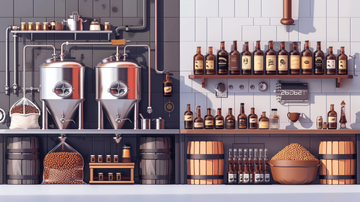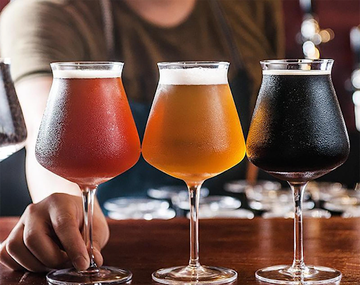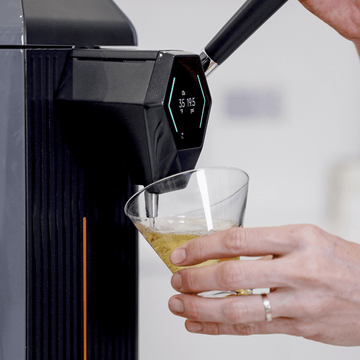One of the most common questions we receive from new iGulu brewers is:
“My beer finished brewing, but it has no carbonation. What went wrong?”
But here’s the good news: A flat beer almost never means you’ve failed. It's usually a simple sign that one tiny detail got in the way of the carbonation process. Your iGulu is engineered to handle the hard part—we just need to help you master a few easy setup checks.
The 3-Minute Fix: Solve 90% of Flat Beer Issues
Start here. Over 90% of carbonation issues are caused by one of these three easy-to-fix oversights.
-
The Lid Seal Ring (The Most Common Miss)
-
The Problem: A twisted, pinched, or missing rubber seal on the keg lid lets CO₂ escape during fermentation.
-
Pro Tip: Before you start brewing, take 10 seconds to make sure the ring is seated perfectly in its groove. (That’s why we include a visual guide in every iGulu kit—because your success is our design goal).
-
-
Heat-Killed Yeast (Protect Your Ingredients)
-
The Problem: Yeast is a living culture. If your ingredient kit sat in a hot spot (like near an oven or in a sunny window), the yeast might have died before you began.
-
Pro Tip: Always store unopened iGulu ingredient kits in a cool, dry place to guarantee vigorous fermentation.
-
-
Loose Connections (The Final Check)
-
The Problem: If the dispensing tube, gas line, or the Pressure Relief Valve (PRV) isn't fully tightened, pressure will leak out.
-
The Simple Fix: Give all connections a final check to ensure they're snug and secure before locking the lid.
-
Understanding Carbonation: What Happens Inside the Keg
Let's clear up the biggest misconception: The fizz in your glass is created naturally by yeast during fermentation. Your external CO₂ cylinder plays no part in this process. This is the magic of iGulu's Pressurized Primary Fermentation—a feature that replaces weeks of messy, uncertain traditional brewing.
The iGulu Way: Our secret is Pressurized Primary Fermentation. We trap the CO₂ produced by the yeast inside the keg from day one. Your beer carbonates itself, naturally and automatically.

So, Why Use a CO₂ Cylinder?
It's for dispensing and preservation only. After fermentation, it replaces the beer you pour, keeping every glass as fresh as the first for weeks. This is what makes iGulu F1 the ultimate all-in-one craft beer appliance.
After fermentation is complete:
-
For the F1 machine: The machine automatically enters the cooling program's "CO2 Mode." The ambient light turns from orange to green. The machine maintains low temperature and monitors keg pressure. Please ensure the CO₂ cylinder is securely connected to the adapter on the back and the valve is fully open. When pressure drops below 10 PSI, CO₂ is automatically added.
-
For the S1 machine: The machine automatically enters the cooling program. There are two dispensing modes (adjustable via the switch on the back of the machine):
-
Air Pump Mode (indicator light is orange): Do not connect CO₂. The machine automatically activates the air pump to replenish pressure when it drops below 10 PSI.
-
CO₂ Mode (indicator light is green): Install the CO₂ cylinder on the adapter and connect it via the gas tube. Open the orange valve and adjust the secondary valve knob to set the working pressure to 10–15 PSI (<1.0 bar). Manually add pressure to the keg as needed. If the output pressure is set above 15 PSI, excess gas may be released through the PRV. Therefore, when using the CO₂ adapter, it is recommended to add gas intermittently and promptly close the branch line valve to avoid waste.
-
The Engineer's Troubleshooting Guide (For Stubborn Issues)
Follow this pro-level guide if problems persist. It’s built on the same deep system knowledge that goes into every iGulu machine.
Symptom: The keg won't hold pressure.
-
Check the Reading (0 PSI): Ensure the pressure inlet plug is connected.
-
Find a Slow Leak: Re-check the keg lid's O-ring and tighten the dispensing outlet.
-
Test the PRV (No Pressure Builds): A steady stream of bubbles means a leak. Our support team is ready to get you a replacement lid quickly.
-
Check the Sensor (Reading is 0, but gas is present): Contact us. This is covered by our warranty, and we'll make it right.







